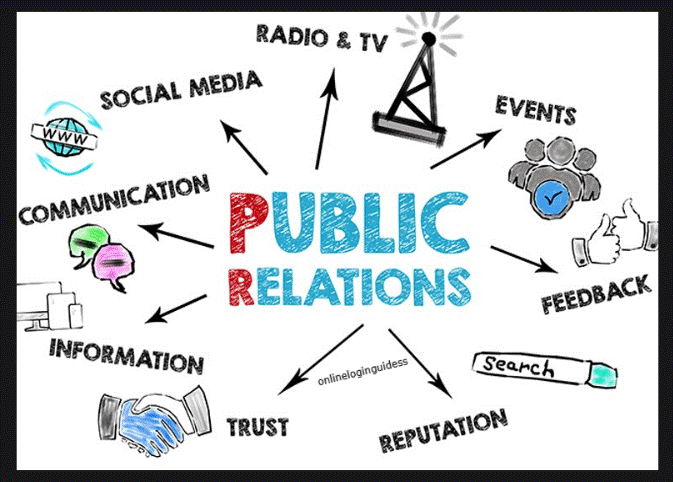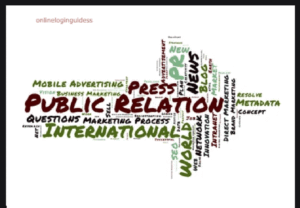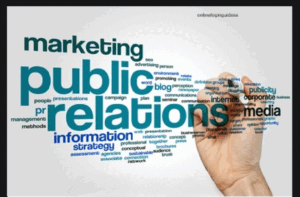Business and Public Relations: A Strategic Partnership for Success
Introduction In the ever-evolving world of business, success is no longer solely dependent on the quality of a product

Table of Contents
ToggleIntroduction
In the ever-evolving world of business, success is no longer solely dependent on the quality of a product or service. In today’s digital age, reputation, communication, and perception play pivotal roles. This is where Public Relations (PR) steps in — a powerful tool that shapes public perception, builds brand credibility, and supports long-term business growth.
Business and PR are deeply interconnected. While business focuses on providing value, PR ensures that this value is effectively communicated to the right audiences. In this article, we’ll explore how PR functions within the business world, its significance, core strategies, challenges, and its future in the modern digital era.

What is Public Relations in Business?
Public Relations is the practice of managing communication between a business and its various publics — including customers, investors, employees, media, and the general public. The goal of PR is to create a positive image and maintain a favorable relationship with the audience.
In a business context, PR is used to:
Enhance reputation
Manage crises
Increase brand awareness
Build stakeholder trust
Support marketing and sales efforts
It differs from advertising in that PR is earned, not paid. A company may release a press statement or host an event, and if media outlets choose to cover it, the coverage is seen as more credible than paid ads.
Importance of PR in Business
a. Builds Brand Reputation
PR helps shape how the public perceives a company. By sharing stories of achievements, innovation, CSR efforts, and ethical practices, businesses can build a positive brand image.
b. Crisis Management
In times of crisis — such as product recalls, legal issues, or public backlash — PR is crucial in controlling damage. A well-planned crisis communication strategy can mitigate reputational harm and regain public trust.
c. Strengthens Investor Relations
Good PR can reassure investors and stakeholders of a company’s stability and potential for growth. It supports transparency and builds confidence through effective financial communication and corporate announcements.
d. Supports Marketing Efforts
PR complements marketing by adding credibility. While marketing shouts, PR whispers. A well-placed news article or influencer mention often feels more authentic than an advertisement.
e. Enhances Employee Morale
Internal PR is just as important. Keeping employees informed and motivated creates a positive work culture, increases loyalty, and improves productivity.
Key PR Strategies for Businesses
a. Media Relations
Building relationships with journalists and media outlets helps businesses get favorable coverage. Press releases, media kits, and interviews are common tools.
b. Content Creation
PR teams create blogs, social media posts, speeches, and newsletters to share the company’s message. Quality content builds authority and trust.
c. Event Management
From product launches to CSR events, organizing public-facing or internal events helps engage key audiences and attract media attention.
d. Influencer and Thought Leadership
Partnering with influencers or positioning executives as thought leaders increases reach and positions the business as an industry authority.
e. Corporate Social Responsibility (CSR)
Highlighting social initiatives not only helps the community but also enhances public perception of the brand.

Types of PR in Business
Media Relations – Engaging with news outlets to promote positive stories.
Investor Relations – Communicating with shareholders and financial analysts.
Internal PR – Fostering communication within the company.
Customer Relations – Managing interactions with consumers to build loyalty.
Community Relations – Supporting local initiatives and creating a presence in communities.
Crisis Communication – Handling communication during emergencies or reputational threats.
The PR Process in Business
Step 1: Research and Planning
Understand your audience, set clear objectives, and choose the appropriate channels.
Step 2: Messaging
Craft key messages that align with the business’s values and resonate with stakeholders.
Step 3: Execution
Distribute press releases, manage events, publish content, or liaise with media.
Step 4: Monitoring
Use media monitoring tools to track coverage and public sentiment.
Step 5: Evaluation
Measure the effectiveness of PR campaigns using KPIs like media impressions, engagement, or changes in public opinion.
Examples of PR in Action
Apple Inc.
Apple doesn’t rely heavily on traditional advertising but uses product launches and media events to generate global buzz.
Nike
Nike uses PR to highlight its values through storytelling and social justice initiatives, such as their campaigns with Colin Kaepernick.
Tata Group (India)
Known for transparency and ethical business practices, Tata’s CSR-driven PR has built trust among millions of Indians.
PR in the Digital Era
The rise of digital platforms has transformed PR:
a. Social Media
Businesses now communicate directly with the public through platforms like Twitter, Instagram, and LinkedIn. Social media allows real-time engagement but also increases scrutiny.
b. Online Reviews and Reputation Management
Sites like Google Reviews and Yelp can make or break a business. PR teams often monitor and manage these platforms to address concerns.
c. SEO and Digital Content
Optimizing press releases and blogs for search engines ensures that the right information reaches the right people.
d. Data-Driven PR
Analytics tools help measure campaign success and refine future strategies.
Challenges in Business PR
a. Fake News and Misinformation
A false rumor can damage a brand’s image. PR must act quickly to correct the narrative.
b. Short News Cycles
With constant updates, news gets outdated quickly. PR teams must be agile and timely.
c. Public Skepticism
People today are more skeptical of corporate messages. Authenticity is key.
d. Cancel Culture
One misstep can go viral and harm a company’s reputation. Sensitivity and awareness are essential in all communication.
Ethics in PR
PR professionals have a responsibility to be truthful and transparent. Ethical PR involves:
Honest communication
Avoiding manipulation
Respecting confidentiality
Social responsibility
Unethical practices can backfire and lead to legal and reputational consequences.
Future of PR in Business
a. AI and Automation
AI tools can help with media monitoring, sentiment analysis, and content generation, making PR more efficient.
b. Personalization
Tailored messages and content based on audience preferences will improve engagement.
c. Integrated Communication
PR will increasingly work hand-in-hand with marketing, sales, and HR to create unified messaging.
d. Sustainability and Social Advocacy
As consumers become more socially conscious, companies must align PR efforts with values like sustainability, diversity, and ethics.
Conclusion
In today’s business environment, Public Relations is not optional — it is essential. A solid PR strategy can build a strong brand, foster trust, handle crises, and provide a competitive edge. As technology and consumer expectations evolve, businesses must adapt their PR practices to stay relevant and resonate with their audiences.
Whether you’re a small startup or a multinational corporation, investing in PR is an investment in your reputation, your relationships, and ultimately, your long-term success.
Let me know if you want this article formatted as a PDF or Word file, translated into Hindi, or tailored for a specific business or industry.














